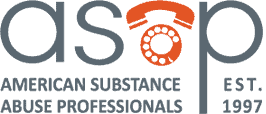By Sherri McAllister, Forbes
Every nonprofit leader strives to offer employees health benefits that are attractive and competitive with the market, but also affordable. Affordability, however, may come at a steep price. For example, to reduce costs, health plans may be incentivizing your employees to seek prescription medication to manage pain instead of safer, effective, drug-free care options.
A recent study and associated commentary published in JAMA Network Open found that out-of-pocket cost and benefit restrictions were often greater for non-opioid low back pain care, such as chiropractic care and physical therapy, compared to an opioid prescription. Even though, according to findings presented at a National Academy of Sciences, Engineering, and Medicine Workshop in December 2018, conservative drug-free care approaches are often the least costly and more effective over the long term.
On top of efficacy, drug-free care for low back pain appears to be less costly to the health care system than pursuing a medical care pathway. Findings from Optum, the health services subsidiary of UnitedHealth Group, show that a conservative care approach involving chiropractic care or physical therapy for low back pain costs the insurer approximately $619 per episode, while primary care costs $728, and care from a specialist costs $1,728. The insurer expects it could save $230 million and reduce opioid prescriptions by 25-26% over two years if half of its members would first pursue a conservative approach for their low back pain.
How will they bring about this change? Eliminating out-of-pocket costs for conservative care and reducing convenience obstacles with faster referrals and more same-day and next-day appointments with doctors of chiropractic and physical therapists.
Given the tendency of many Americans to choose the lower-cost and most convenient form of care for them, whether effective or not, nonprofit leaders will want to review their health plan contracts. Leaders should also talk with their human resources representative or benefits broker before the next open enrollment period to make drug-free pain management more attractive and accessible.
McAllister, S. (2019). Is your health plan driving employees to opioids? Forbes. Retrieved from https://www.forbes.com/sites/forbesnonprofitcouncil/2019/03/08/is-your-health-plan-driving-employees-to-opioids/#507934ed4537




